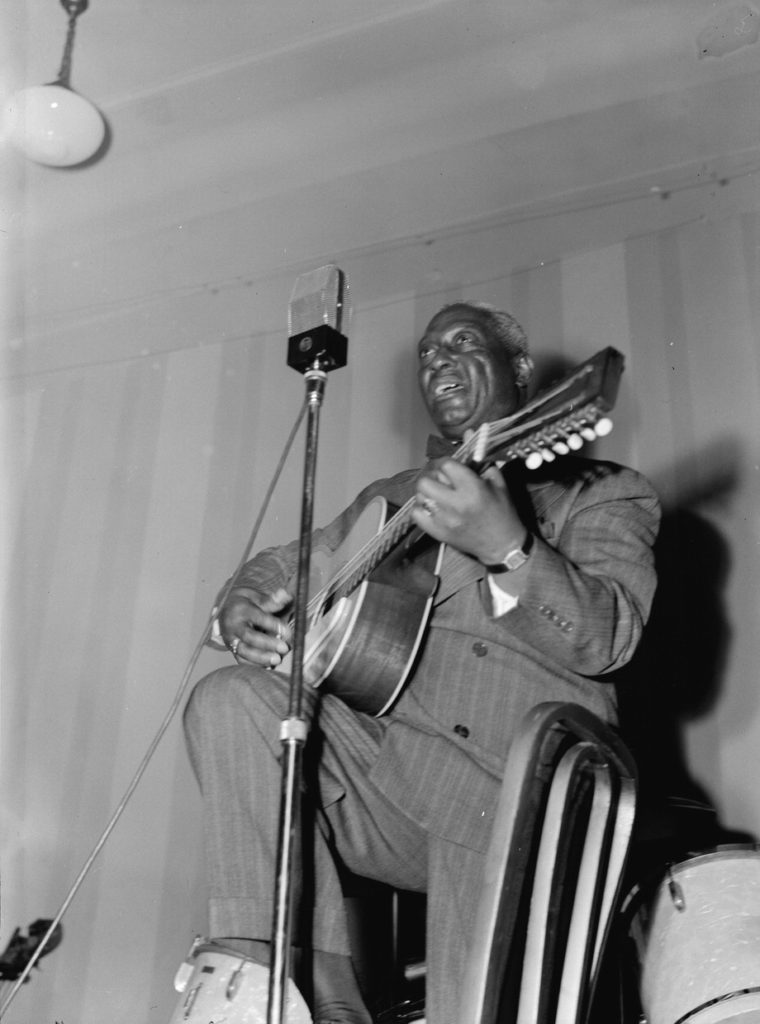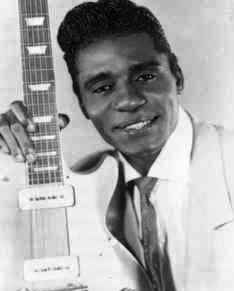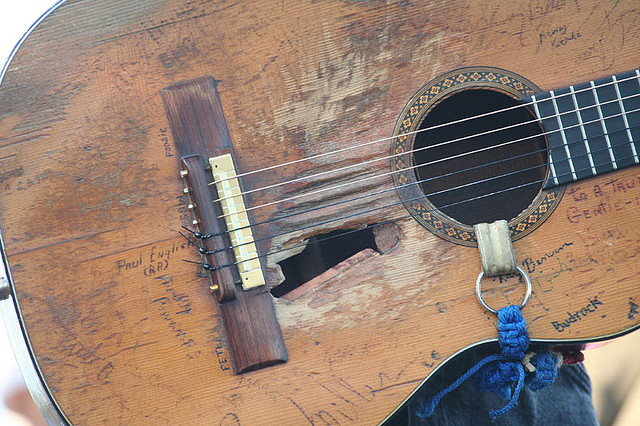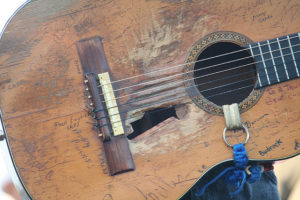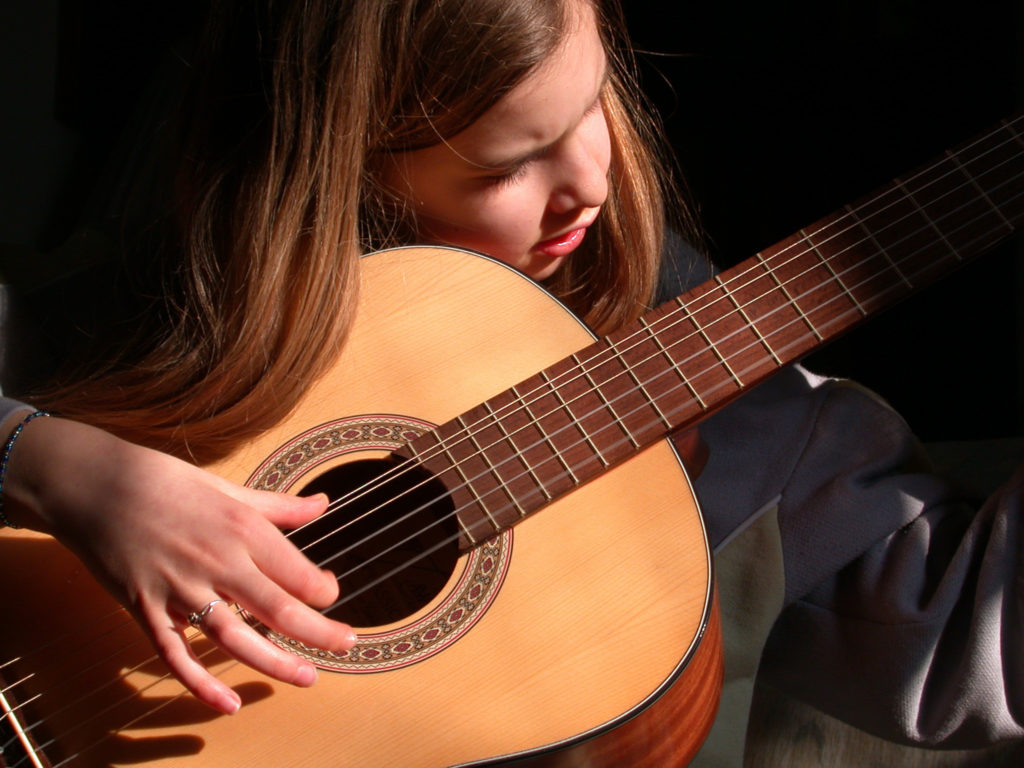Lead Belly
Lead Belly (official name, Huddie William Ledbetter) was born on January 20, 1889 in Louisiana. He passed away at age 60 in New York City.
He spent several stints in prison for violent crimes – and was pardoned twice (at least partly owing to his musical abilities).
Lead Belly was a master of the 12 string guitar and influenced many later players including Pete Seeger. He mostly played with thumb and finger picks and his guitar prowess coupled with his powerful singing voice made him a major force in folk and blues music. He also influenced a large number of Jazz, country and rock artists including Frank Sinatra, Johnny Cash, Tom Petty, Keith Richards and Nirvana.
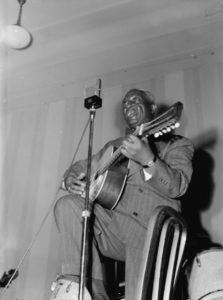
Lead Belly [ public domain ]


